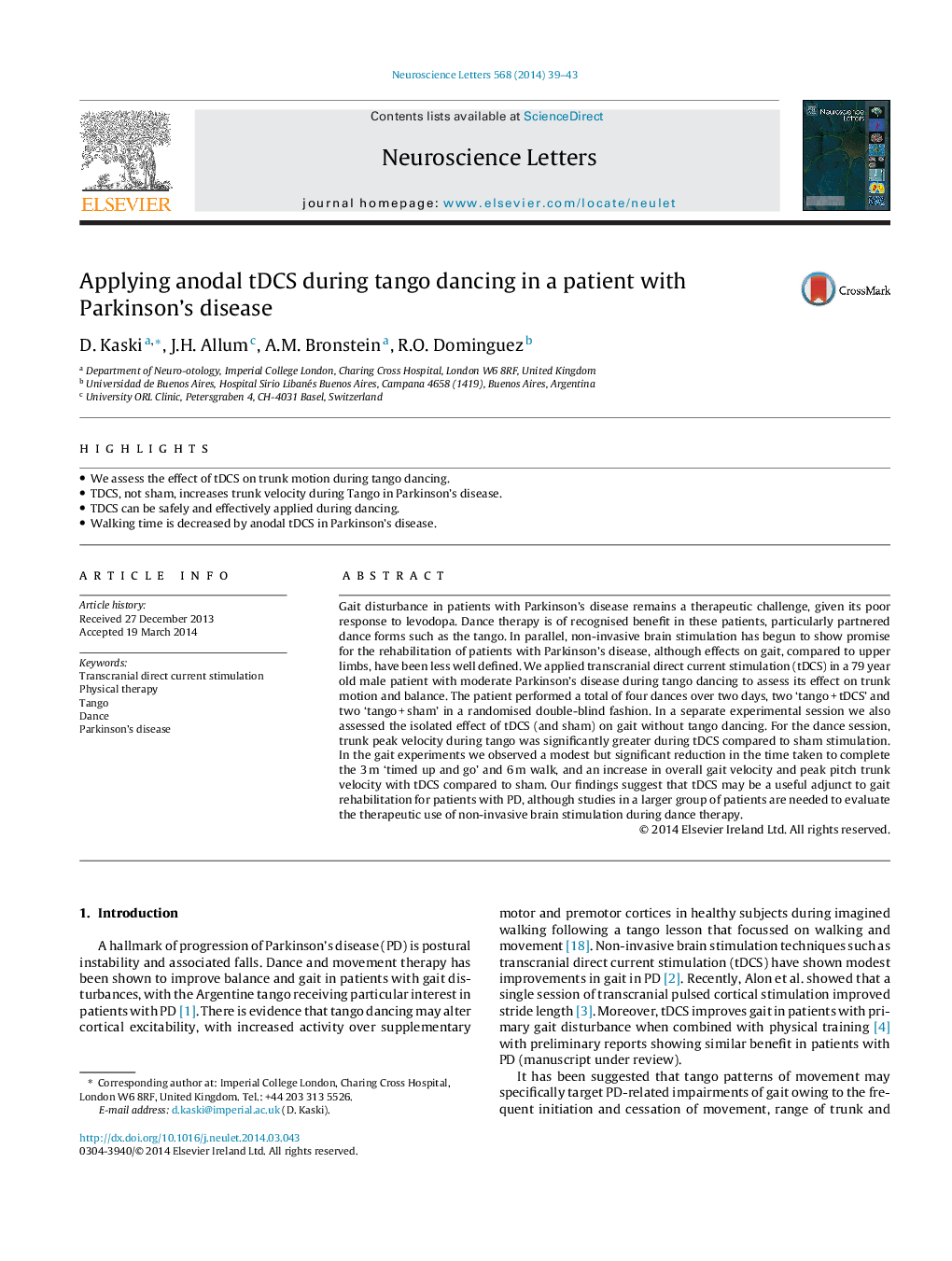| کد مقاله | کد نشریه | سال انتشار | مقاله انگلیسی | نسخه تمام متن |
|---|---|---|---|---|
| 4343763 | 1615131 | 2014 | 5 صفحه PDF | دانلود رایگان |

• We assess the effect of tDCS on trunk motion during tango dancing.
• TDCS, not sham, increases trunk velocity during Tango in Parkinson's disease.
• TDCS can be safely and effectively applied during dancing.
• Walking time is decreased by anodal tDCS in Parkinson's disease.
Gait disturbance in patients with Parkinson's disease remains a therapeutic challenge, given its poor response to levodopa. Dance therapy is of recognised benefit in these patients, particularly partnered dance forms such as the tango. In parallel, non-invasive brain stimulation has begun to show promise for the rehabilitation of patients with Parkinson's disease, although effects on gait, compared to upper limbs, have been less well defined. We applied transcranial direct current stimulation (tDCS) in a 79 year old male patient with moderate Parkinson's disease during tango dancing to assess its effect on trunk motion and balance. The patient performed a total of four dances over two days, two ‘tango + tDCS’ and two ‘tango + sham’ in a randomised double-blind fashion. In a separate experimental session we also assessed the isolated effect of tDCS (and sham) on gait without tango dancing. For the dance session, trunk peak velocity during tango was significantly greater during tDCS compared to sham stimulation. In the gait experiments we observed a modest but significant reduction in the time taken to complete the 3 m ‘timed up and go’ and 6 m walk, and an increase in overall gait velocity and peak pitch trunk velocity with tDCS compared to sham. Our findings suggest that tDCS may be a useful adjunct to gait rehabilitation for patients with PD, although studies in a larger group of patients are needed to evaluate the therapeutic use of non-invasive brain stimulation during dance therapy.
Journal: Neuroscience Letters - Volume 568, 7 May 2014, Pages 39–43